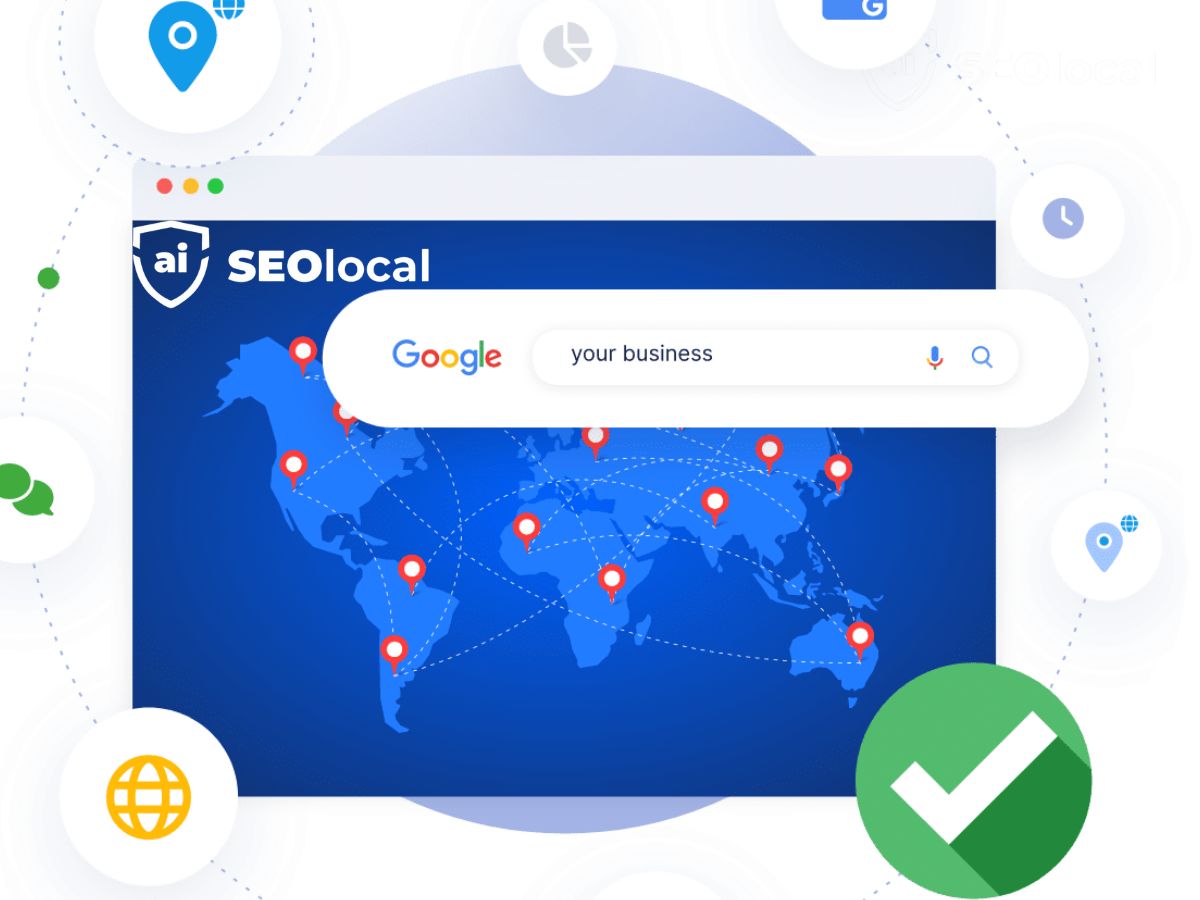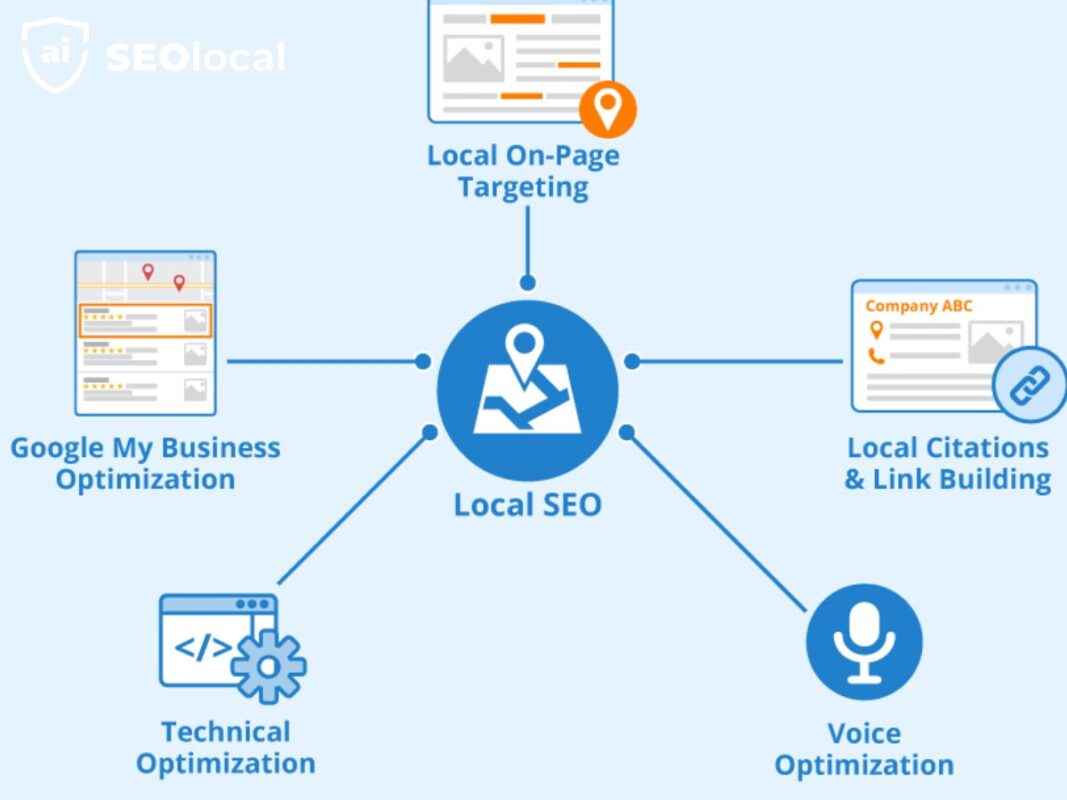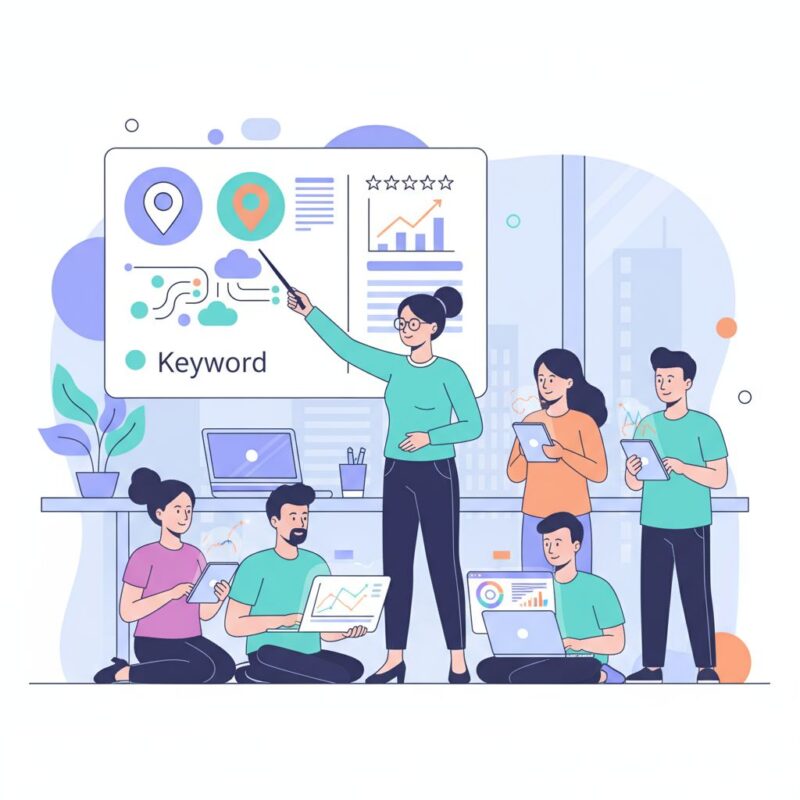- Advanced Local SEO Strategies
- Fundamentals of Local SEO
- Google Business Profile (GBP) Optimization
- Local Keywords and Content Strategy
- Local Link Building
- Local Paid Advertising
- Local Search Ranking Factors
- Local SEO Best Practices
- Local SEO Tools and Analytics
- Local Social Media Marketing
- Online Reviews and Reputation Management
- Technical SEO for Local Businesses
Local SEO vs National SEO: What’s Best for You?

Did you know nearly half of all online searches look for nearby businesses? That means if your strategy doesn’t match your audience, you could miss out on valuable traffic. Choosing the right approach depends on your goals, whether you serve a neighborhood or customers nationwide.
Targeting the wrong audience wastes time and money. A bakery down the street needs different tactics than an e-commerce store shipping countrywide. The key is understanding search intent and aligning your efforts with how people find you.
Some companies blend both strategies, especially if they operate in multiple markets. But no matter your size, the right plan boosts visibility where it matters most. Start by defining who you serve—then tailor your approach accordingly.
Key Takeaways
- 46% of searches seek local results, making location-based tactics essential for nearby customers.
- National strategies focus on broader audiences, requiring different keyword research.
- Mismatched efforts drain budgets without delivering relevant traffic.
- Hybrid approaches work for businesses serving both local and distant markets.
- Your business model determines the best path—prioritize what fits your goals.
Introduction: Understanding Local SEO vs National SEO
Over 90% of online journeys begin with a search engine, making visibility crucial for businesses. Search engine optimization (SEO) ensures your content ranks well, whether you target nearby customers or a nationwide audience. The right strategy depends on how users search for your products or services.
Google’s results pages vary significantly based on search intent. Local queries often trigger features like the 3-pack map listings, while national searches prioritize traditional organic rankings. Understanding this difference helps tailor your marketing efforts effectively.
Here’s how search engine results differ:
| Feature | Local Results | National Results |
|---|---|---|
| Top SERP Element | Google 3-pack (map listings) | Organic listings (10 blue links) |
| Intent | Commercial (e.g., “buy coffee near me”) | Informational (e.g., “best coffee brands”) |
| Conversion Rate | ~80% | ~30% |
Local searches often signal immediate purchase intent. For example, “plumber near me” suggests urgency, while national keywords like “how to fix a leaky pipe” attract readers seeking advice. Engine optimization tactics must align with these behaviors.
Google’s algorithm weighs factors like proximity for local queries and domain authority for broader terms. This optimization difference means a bakery’s website might focus on Google My Business, while an e-commerce store competes for high-volume keywords.

What Is Local SEO?
Search engines prioritize businesses that optimize for specific geographical areas. This strategy, known as Local SEO, helps companies appear in search results when users look for nearby services or products. It’s a hyper-targeted approach designed to attract customers within a specific radius.
Definition and Core Components
Local SEO focuses on improving your visibility in local search results. Key components include optimizing your Google Business Profile, maintaining consistent NAP (Name, Address, Phone) information across directories, and building local citations. These elements ensure search engines recognize your business as relevant to nearby users.
Managing reviews is another critical aspect. Positive feedback boosts your credibility and encourages potential customers to choose your business. Tools like Semrush Local can help streamline citation management and track your progress.
Who Needs Local SEO?
This strategy is ideal for businesses with physical locations or those serving specific areas. Industries like food service, home services, and retail stores benefit the most. For example, an ice cream shop targeting keywords like “best ice cream near me” can attract more foot traffic.
Voice search optimization is also becoming essential. Queries like “Where’s the closest coffee shop?” often lead to local results. By focusing on these trends, you can stay ahead of the competition and connect with your audience effectively.
What Is National SEO?
Businesses aiming for nationwide reach require a different approach to search engine optimization. Unlike strategies focused on specific areas, national SEO targets a broader audience. This method ensures your content ranks well across the entire country, attracting traffic from diverse regions.
National SEO involves optimizing your website for high-volume keywords and building authority through backlinks. It’s ideal for companies offering products or services to a wide audience. Whether you’re an e-commerce store or a SaaS provider, this strategy helps you compete on a larger scale.

Definition and Core Components
National SEO is a strategy designed to improve your visibility across the country. It focuses on broad keywords, technical optimizations, and content marketing. Unlike local SEO, it doesn’t target specific regions but aims to attract traffic from anywhere.
Key components include:
- Technical SEO: Ensuring your website is fast, mobile-friendly, and easy to navigate.
- Content Marketing: Creating valuable content that ranks for high-volume keywords.
- Authority Backlinks: Building links from reputable sites to boost domain authority.
Who Needs National SEO?
This strategy is essential for businesses with a nationwide audience. E-commerce stores, SaaS providers, and online education platforms benefit the most. For example, a cloud storage company targeting keywords like “best cloud storage” can attract users from across the country.
Industries like national retailers and remote service providers also rely on national SEO. By focusing on broad keywords and technical optimizations, they can compete effectively in a larger market.
| Aspect | National SEO | Local SEO |
|---|---|---|
| Target Audience | Countrywide | Specific regions |
| Keyword Focus | Broad (e.g., “best products”) | Location-specific (e.g., “near me”) |
| Competition | High | Moderate |
National SEO requires a strong focus on domain authority and technical optimizations. By understanding these differences, you can tailor your strategy to meet your business goals effectively.
Key Differences Between Local SEO and National SEO
Understanding the differences between targeting nearby customers and a nationwide audience is crucial for your strategy. Each approach requires unique tactics to succeed. Let’s break down the key areas where they diverge.
Target Audience and Geographic Focus
Your target audience determines whether you focus on a specific area or a broader market. For nearby customers, location-based searches like “coffee shop near me” are common. These queries signal immediate intent, making them highly valuable for businesses with physical locations.
On the other hand, nationwide strategies aim for a larger audience. Keywords like “best coffee brands” attract users from across the country. This approach is ideal for e-commerce stores or services available remotely.
Keyword Strategies
Keyword strategies vary significantly between the two approaches. Local efforts often include location-specific terms, such as “LA bakery” or “plumber in Chicago.” These phrases help you rank in your immediate area.
National campaigns focus on broader terms like “best gluten-free bread” or “cloud storage solutions.” These keywords have higher search volumes but also face stiffer competition. Tailoring your strategy to match your audience’s search behavior is essential.
Competition and Resources
Competition differs based on your focus. Local businesses compete with others in their area, making it easier to stand out. Think of it as running a town marathon—challenging but manageable with the right effort.
National campaigns, however, are like competing in the Olympics. You’re up against industry leaders with established authority. This requires more resources, such as advanced technical optimizations and high-quality backlinks.
Budget allocation also varies. Local strategies often prioritize citation management and review optimization. National efforts focus on link building and content marketing to build domain authority.
Understanding these differences helps you allocate resources effectively. Whether you’re targeting a specific area or a nationwide audience, aligning your strategy with your goals ensures better results.
Benefits of Local SEO and National SEO
Both strategies offer unique advantages depending on your business goals. Whether you’re targeting nearby customers or a nationwide audience, understanding these benefits helps you make informed decisions. Let’s explore what each approach brings to the table.
Advantages of Local SEO
Focusing on a specific area attracts high-intent customers ready to take action. For example, searches like “coffee shop near me” often lead to immediate visits. This strategy builds community trust and strengthens your presence in the neighborhood.
Cost efficiency is another key benefit. You don’t need to compete with national brands, making it easier to achieve better rankings. Tools like Semrush Local help track performance and optimize your efforts effectively.
Reviews play a crucial role in building credibility. Positive feedback from local customers can significantly boost your reputation. This approach is ideal for businesses with physical locations or those serving specific regions.
Advantages of National SEO
Targeting a broader audience offers scalability and diverse reach. This strategy is perfect for businesses offering products or services to users across the country. It builds industry authority and positions you as a thought leader.
Content-driven campaigns attract a wide range of customers. High-quality articles, guides, and videos can rank for competitive keywords. This approach requires more resources but delivers long-term growth potential.
National strategies also improve website traffic and conversions. By focusing on technical optimizations and authority backlinks, you can compete effectively in a larger market. This method is ideal for e-commerce stores and remote service providers.
- Local benefits: High-intent customers, community trust, cost efficiency.
- National benefits: Scalability, diverse audience reach, industry authority.
- Compare immediacy vs long-term growth potential.
- Discuss foot traffic vs website traffic conversion differences.
- Highlight review-driven credibility vs content-driven thought leadership.

When to Use Local SEO vs National SEO
Choosing the right marketing strategy depends on your business model and target audience. Each approach has its strengths, and understanding when to use them ensures your efforts yield the best results. Let’s explore the scenarios where each strategy shines.
Scenarios for Local SEO
Local strategies are ideal for businesses with a physical presence or those serving specific areas. If you operate a single location, like a bakery or a hair salon, focusing on nearby customers is crucial. Community-focused businesses also benefit from this approach, as it builds trust and loyalty.
Service-area businesses, such as plumbers or electricians, should prioritize local efforts. These industries rely on immediate customer action, making location-based optimization essential. Seasonal businesses, like ice cream shops, can also leverage local strategies during peak times.
Scenarios for National SEO
National strategies work best for businesses with a broader reach. If you offer digital products or ship nationwide, this approach ensures visibility across the country. E-commerce stores, SaaS providers, and online education platforms are prime examples.
Brand awareness campaigns also benefit from national efforts. By targeting high-volume keywords and building authority, you can position your business as an industry leader. This strategy requires more resources but delivers long-term growth potential.
| Aspect | Local Strategy | National Strategy |
|---|---|---|
| Target Audience | Specific regions | Countrywide |
| Best For | Brick-and-mortar, service-area businesses | E-commerce, digital products |
| Resource Allocation | Moderate | High |
Hybrid models are also effective for multi-location businesses. For example, an ice cream shop with online delivery can combine local and national efforts. This approach maximizes reach while catering to both nearby and distant customers.
Understanding your business size and goals helps determine the best strategy. Whether you focus on a specific area or a nationwide audience, aligning your efforts with your objectives ensures success.
Contact SEO Local for Expert Guidance
Ready to take your online presence to the next level? SEO Local is here to help. Our team of specialized consultants provides tailored strategies to meet your unique needs. Whether you’re targeting a specific area or a broader audience, we’ve got you covered.
We understand that every business is different. That’s why we focus on developing location-specific strategies to maximize your reach. Our expertise with tools like Semrush Local ensures your efforts are optimized for success.
Contacting us is easy. Reach out via WhatsApp at +1 786 840 9644 to start the conversation. We’re here to answer your questions and provide actionable insights.
Take advantage of our free audit opportunities. Let us analyze your current efforts and identify areas for improvement. With our guidance, you’ll be on the path to achieving your goals faster.
- Specialized consultants for tailored strategies.
- Expertise with tools like Semrush Local.
- Location-specific strategy development.
- Free audit opportunities to identify improvements.
- Preferred contact method: WhatsApp.
Don’t wait to make a difference in your online presence. Contact SEO Local today and let us help you succeed.
Conclusion
The right approach to search engine optimization depends on your audience and goals. The key difference lies in intent and geography—whether you’re targeting nearby customers or a broader market. Your business model determines which strategies work best for you.
Periodic reassessment of your efforts ensures alignment with emerging trends, like the growing impact of voice search. Over time, measurable results will show the effectiveness of your chosen path.
Empower yourself to make informed decisions. Whether you focus on a specific area or a nationwide audience, the right strategy will drive success. Start today and see the difference it makes.
FAQ
What is the main difference between local and national search optimization?
Local focuses on attracting nearby customers, while national targets a broader audience across the country. Geographic reach and keyword strategies vary significantly.
How do I know if my business needs local or national strategies?
If you serve customers in a specific area, like a restaurant or repair shop, local works best. For e-commerce or brands with nationwide reach, national delivers better results.
Do ranking factors differ between these two approaches?
Yes. Local relies heavily on Google Business profiles, reviews, and location-based terms. National prioritizes domain authority, backlinks, and competitive keyword research.
Can small businesses benefit from national efforts?
Only if they have the resources to compete with larger brands. Most small companies see faster success by dominating their immediate market first.
What role do citations play in local visibility?
Consistent business listings across directories boost local rankings. They verify your address, phone number, and hours, helping search engines trust your information.
How long does it take to see results from these strategies?
Local efforts often show improvements in 3-6 months. National campaigns may take 6-12 months due to higher competition and broader targeting requirements.
Should service-area businesses use different tactics than storefronts?
Yes. Mobile-friendly sites and service pages perform better for businesses visiting customers, while brick-and-mortar locations need strong map pack optimization.













